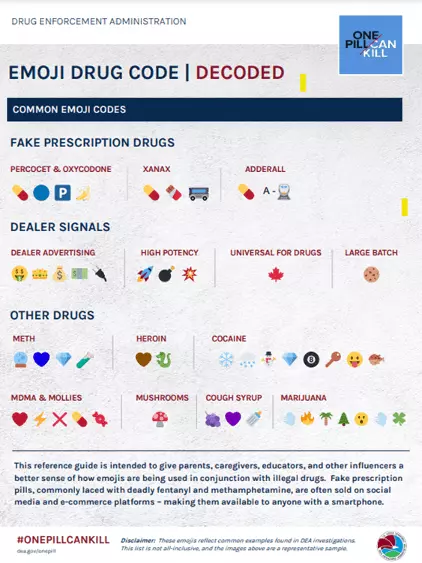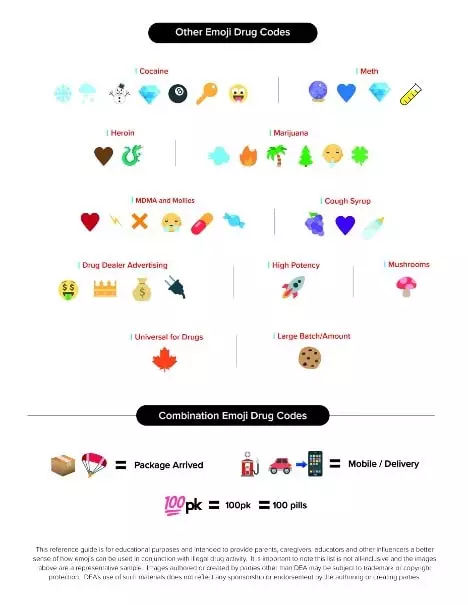Law enforcement has cracked the Emoji drug code used by suspected Drug Dealers and teenagers buying and selling controlled substances. Xanax, Cocaine, Marijuana, Meth, heroin, Oxy, MDMA and other control substances are being identified with emojis on social media and messaging systems in an attempt to conceal the true intent to purchase different controlled substances. Drug users and sellers are always trying to hide the illegal intent however law enforcement has now cracked the code on Emojis.
Emojis, which are tiny digital symbols that serve as emotional cues, are used to express ideas or emotions in text and can convey a wide range of emotions, such as sarcasm, sadness, humor, and frustration. Emojis are used to craft original text messages or social media captions, such as using the wink face or kissy face when flirting with someone or posting a beer or wine emoji when enjoying happy hour. Unfortunately, emojis are now being used to buy and sell drugs. Regardless of how innocent these little images may seem they can be used for devious purposes and law enforcement has caught on to this tactic.
The Drug Enforcement Agency (DEA) has released a visual list of narcotics codes that are used on social media by teenagers to communicate with others about the drugs they are using or looking to obtain. Emojis can be used singly to signify specific types of drugs or in groups to convey more complex messages. For instance, a dealer could use a box and a parachute to indicate the package has arrived, or a gas pump + Car + phone to offer mobile delivery.
This coding system is particularly risky due to the prevalence of fentanyl, a lethal opioid, in fake prescription pills being sold on social media. Just two milligrams of Fentanyl can be lethal. These codes should be understood by parents and caregivers, and they should monitor the social media activity of their children. The DEA says that “emojis, on their own, should not be indicative of illegal activity, but coupled with a change in behavior, change in appearance, or significant loss/increase in income should be a reason to start an important conversation.” When those factors are present, it is time to act.


Reference: https://www.dea.gov/sites/default/files/2021-12/Emoji%20Decoded.pdf

